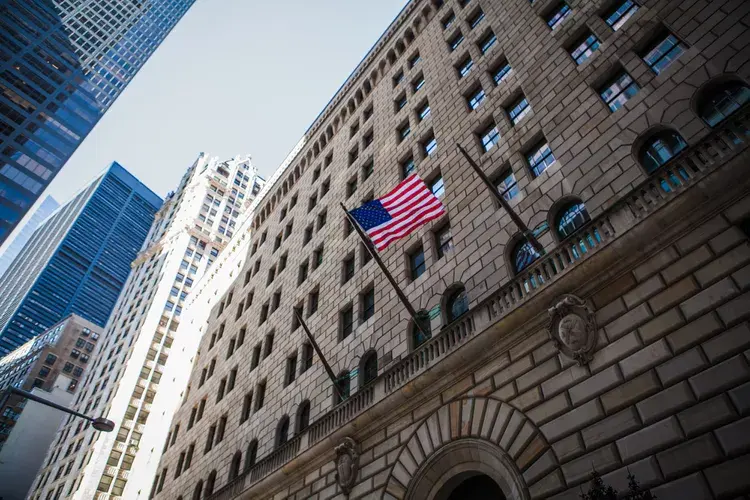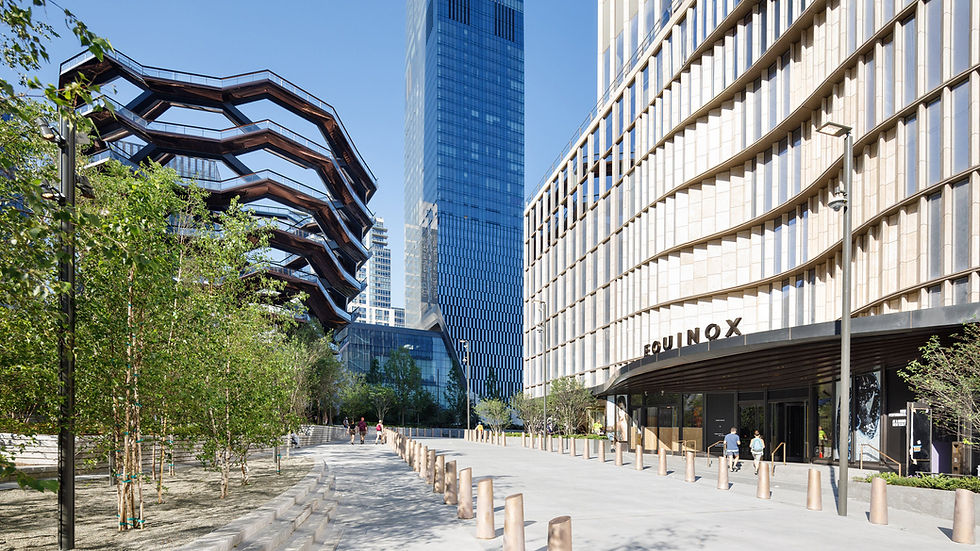Weekly Market Report - March 3, 2023
- Norman Bobrow

- Mar 3, 2023
- 7 min read
***
The number of big office landlords defaulting on their loans is on the rise, fresh evidence that more developers believe that remote and hybrid work habits have permanently impaired the office market. The giant investment manager Brookfield Asset Management recently defaulted on a total of over $750 million in debt for a pair of 52-story towers in Los Angeles, according to a February securities filing. Real-estate firm RXR is in talks with creditors to restructure debt on 61 Broadway, a 34-story tower in Manhattan’s financial district, according to people familiar with the matter. Handing over the building to the lender is among the options under consideration.
Five to 10 office towers each month join the list of properties at risk of defaulting because of low occupancy, expiring leases or maturing debt that would have to be refinanced at a higher rate. Concerns over the health of the office building industry have mounted throughout the pandemic. The weak return-to-office rate has led to soaring vacancy levels in many cities. Last year’s spike in interest rates increased the cost of buying and refinancing properties and squeezed property values. Until now, most landlords have been able to stay current on their mortgages because office leases typically run for 10+ years and lenders have been willing to extend expiring mortgages. The delinquency rate for office loans that back commercial-mortgage backed securities remain low, but it is heading higher. The rate last month rose by a quarter of a percentage point to 1.83%, its largest increase since December 2021.
The growing number of distressed office buildings reflects a recognition by owners and lenders that the robust return to the office they had hoped for isn’t likely to ever materialize. The number of employees returning to the office rate has plateaued at around half the level it was before the pandemic, reflecting the popularity of remote and hybrid work policies. Landlords are taking some comfort that the highest quality office space in good locations still attracts demand. Some also predict that an economic downturn would empower managers to insist the employees work in the office.
***
With white-collar workers viewing the five-days-in-person week as optional, property investors terrified of losing billions are trying to persuade the city to let them do something else with their real estate, from casinos to housing. But a half-occupied office building may be worth more to New York. As the city approaches the third anniversary of COVID lockdowns, Manhattan’s skyscrapers hover around the 50% occupancy mark. And with some smaller tenants giving up their office space altogether, or taking less space as leases expire, vacancy levels are high and rising. The amount of office space available for rent has increased by half since 2019. The vacancy rate is a record 22.2%, twice the pre-COVID average.
Major landlords are giving “the keys back to the bank” on some buildings, particularly mid-aged buildings. Property owners and the investors that lent them money are eager not to lose their shirts, so they want to shrink the office market: less supply of office space, higher prices for what’s left. At the same time, Manhattan CEOs who walk around their offices and see empty desks are annoyed at having to pay for empty space. Getting office workers into Manhattan two or three days a week is a major accomplishment, compared with no days a week. It’s good for both employers and workers. People benefit from teamwork and in-person meetings on the days they go in and from greater concentration on solitary tasks on the days they stay home. Cheaper office space is good, from this perspective. If employers respond to people coming in less often by shrinking the square footage each worker has, they’ll just make a miserable office environment. People will go back to staying home when they can or simply be less productive.
With lower office rents, employers face less temptation to do this. Second, having a core office hub, though dismissed as old-fashioned by urban theorists, is good for New York City. Office properties paid about $7 billion in annual taxes in fiscal year 2021, mostly property taxes, per the state comptroller. That’s about 11% of total taxes. A worker who commutes to Manhattan two or three days a week is still legally a New York taxpayer. A worker who stays home and lives in New Jersey or Connecticut at some point will not be.
***
Nearly three years since the start of the pandemic, more companies are starting to return to the office in either a hybrid or full-time capacity, and it has become evident that many workers have been longing for in-person interaction with their colleagues. While many employees see the benefits of working from home, 87% reported that offices are important for building workplace camaraderie and furthering collaboration. In fact, more than half of survey respondents said they prefer to go to the office at least three days a week. In preparation for more workers returning to the office, CRE owners and developers have been hard at work implementing amenity programs that will make employees truly excited about coming back each day. Those investments are paying off. In fact, by 2025, properties with an abundance of amenities are expected to see a 12% higher demand than properties that have failed to adjust to workers' needs.
Building owners clearly understand the importance of a strong amenity program, but designing and implementing them can be complex. When developers design a building, it is common for them to not know exactly what kind of office tenant will occupy it since the market can vary. However, the key to a successful amenity program is to research a particular area to gain a stronger understanding of what potential tenants might be seeking. To forge connections with a tenant’s employees, owners and developers are switching from a traditional office model to a more hospitality-based approach, highlighting amenities as the main driver to get people back to the office.
Workers want variety in their day, moving from space to space with the ability to relax or socialize and engage with co-workers, he said. By having an activated space that is thoughtfully built with these core elements in mind, professional relationships will flourish and workers will feel a greater sense of community. Without an activated space, motivating workers to return to the office may prove difficult, and the office energy level may feel lackluster or impersonal. Looking forward, the industry is recognizing that there is a need to accommodate the shifts in workers’ preferences, but it is essential to get the word out about their willingness to adapt to modern workplace must-haves.
***
Office-to-residential conversion has become the hottest topic in New York development in recent months — but without legislative changes, real estate players say nearly all hoped-for transformations of languishing properties will be dead in the water. Mayor Eric Adams wants to form a partnership with the industry to make these conversions realistic, but he is also trying to balance the future fiscal health of the city, Lucy Joffe, New York City Department of Housing Preservation and Development's assistant commissioner for housing policy, said at Bisnow's New York Construction and Development event last week.
Pressure on office landlords in the city is now intensifying, and many owners are looking at what to do with properties that no longer command top rents and strong leasing velocity. The financing environment is not kind for a large swath of the city's office buildings — older products with high vacancy rates in what are now considered less attractive districts. The answer, in some cases, could be converting them to badly needed housing, but a host of policy changes must take place first, panelists said. Even then, the high cost of building, occupancy levels and design of a property can kill a conversion. For its part, the city is committed to making it easier, Joffe said.
Developers on stage said the floor-area ratio cap of 12 on residential buildings, set in a 1961 zoning code, is a major issue holding back developments. Adams last month announced his plans to rezone Midtown Manhattan to allow for residential after a city-run task force charged with examining conversions released a report with recommendations that could open up an additional 136M SF eligible for conversion. The task force recommended allowing conversions of buildings built before 1990, which would open up 120M SF of office space to conversion. Another 16M SF of conversion space could be found, the task force said, by allowing conversions in all high-intensity office districts. The city’s task force recommended creating a tax incentive to provide support for mixed-income housing. Many proponents have pointed to 421-g, an incentive that sunsetted in 2006 that was used to convert nearly 13M SF of office space in Lower Manhattan.
Beyond addressing the housing crisis, some have argued incentives are worth it for the city, mainly because an empty office building produces far less in tax revenue than a full residential building, even a subsidized one. Gov. Kathy Hochul has proposed bringing in a tax break, called Affordable Housing from Commercial Conversions, which would offer a 19-year abatement for conversions that set 20% of the new units for households earning less than 70% of the area median income. Joffe said the proposal is subject to legislative approval, but noted if lawmakers approve Hochul’s ideas, the implementation would be relatively swift. In regards to the Midtown rezoning Adams is pursuing, she said planning a rezoning “takes a couple of years.”
Even amid these challenges, plenty of companies are gearing up to put money behind these kinds of conversions. Silverstein Properties, for example, is seeking to raise $1.5B to fund office conversions, targeting these kinds of obsolete properties in U.S. cities. The company has already partnered with Metro Loft with the view of turning 55 Broad St. in the Financial District from a mostly vacant office building into more than 500 apartments. Metro Loft has so far built 5M SF of residential property out of old commercial buildings, establishing itself as the leader on this kind of work in the city.









Comments